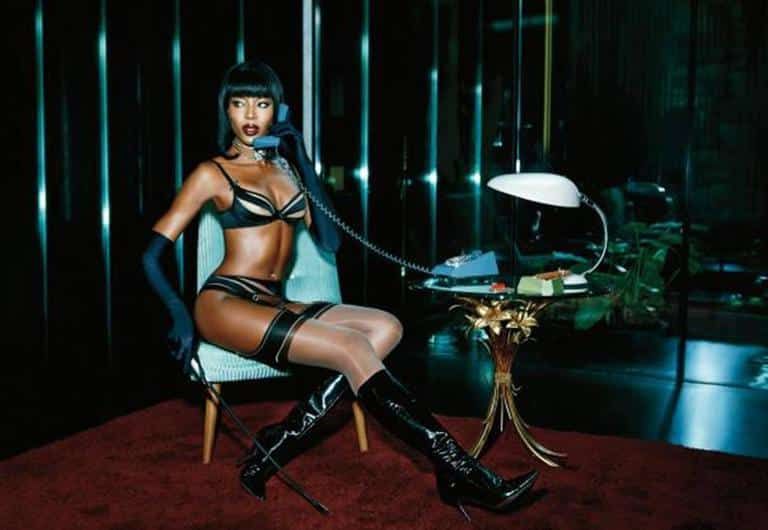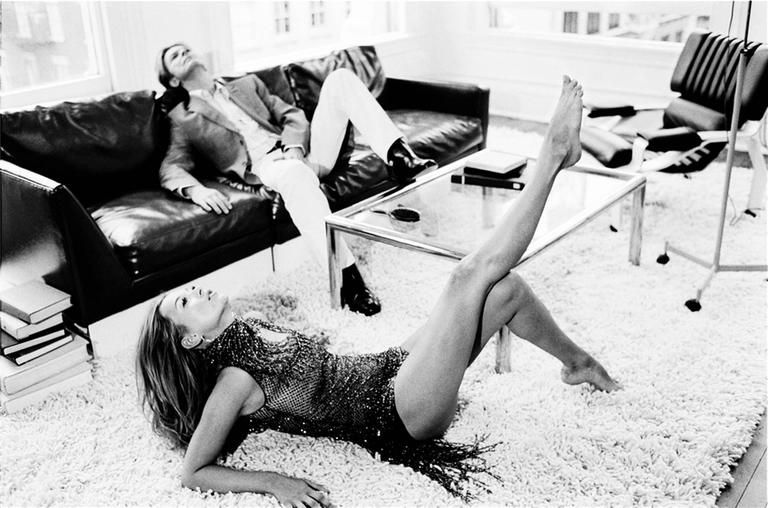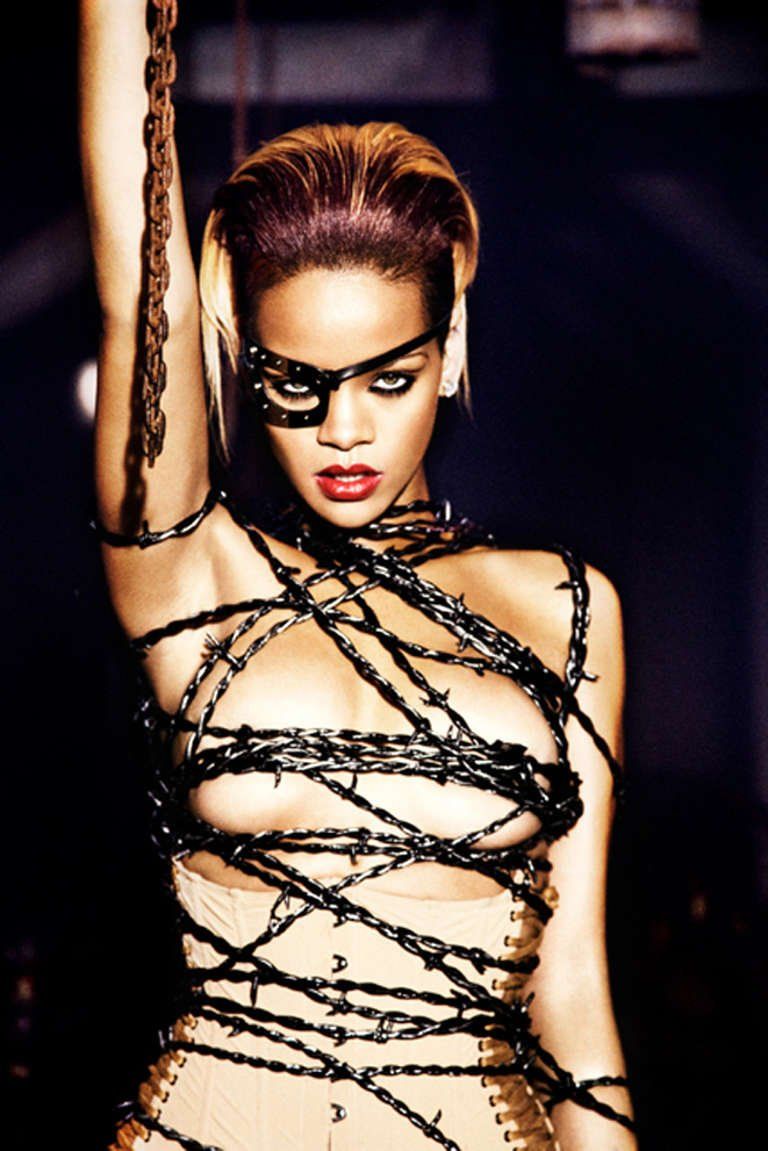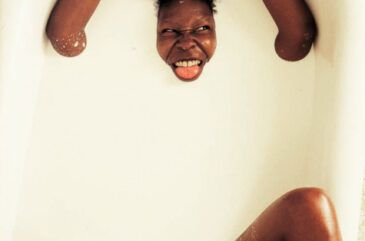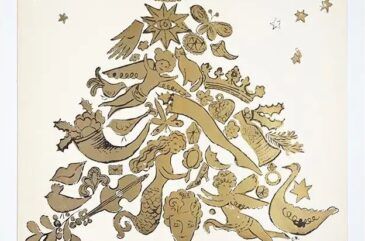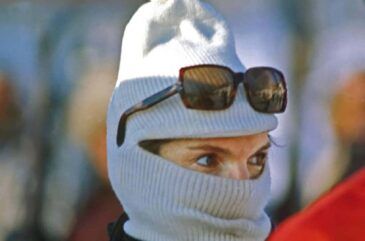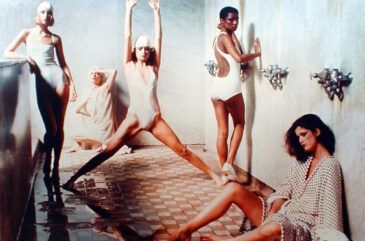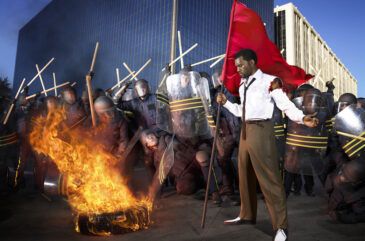She is much praised and sought-after, with her work regularly published in such magazines as Vogue, Vanity Fair, Harper’s Bazaar i-D, and Paper, but why isn’t the trailblazing fashion photographer Ellen von Unwerth more famous?
Being a woman might have something to do with it. After all, fashion photography is not only dominated by men, but it is also assessed by the standards of the male gaze.
As a woman, and a former top model to boot, von Unwerth relates differently to the young women captured by her lens — and they to her. Instead of taking iconic images of impassive beauties, she snaps photos of frolicsome fillies, brimming with personality. If she has a message, it’s that Cyndi Lauper was right: Girls really do just wanna have fun. But it’s only now, in the age of Lena Dunham, that that viewpoint is gaining some artistic — and feminist — credence.
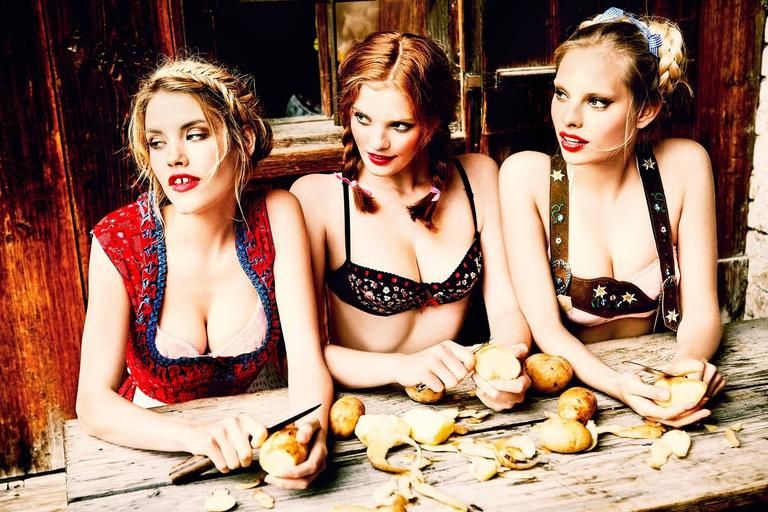
Bavarian Girls is in von Unwerth’s book Heimat, published by Taschen. A print of the photo comes with the title’s Art Edition.
If anyone believes in enjoying life, it’s von Unwerth. Had she not been blessed with high spirits, the odds are she’d never have become the accomplished lenswoman she is, because hers was a hard-knock childhood. Born in Frankfurt in 1954, she lost both of her parents by the age of two and grew up in orphanages and foster homes. “It’s what made my life,” she told the Guardian in a recent interview. Interestingly, she wasn’t referring to its tragic dimensions, but the freedom it gave her.
“I remember my childhood as being fairly happy,” she wrote in the introduction to her 2011 photo book Fraulein (Taschen). In her early teens, she and some friends established a hippie commune on an old farm in the Bavarian Alps. Artists and performers regularly passed through the nearby market town, and in that archly traditional locale, where the locals still wore ledenhosen and dirndls, von Unwerth became fascinated with nonconformists and renegades.
Can it be a surprise, then, that she eventually joined the circus? It was a circus in Munich, where she was taking college classes. She recalled it as being “very poetic and charming,” in an interview on the photography site Faded and Blurred, “with beautiful lights and music.” Fresh-faced, blond and leggy, the young von Unwerth wore a top hat and fishnet stockings and served as an assistant to the magician and the knife thrower. But at age 20, her big-tent adventure came to an end when a fashion photographer discovered her on the street. Before long, she was living in Paris, modeling for the likes of Guy Bourdin and Oliviero Toscani.
Von Unwerth felt at home with the carnival aspect of photoshoots — traveling, playing dress up and meeting the many creative eccentrics that make up the fashion tribe. As the years went on, though, she grew increasingly impatient with being told how to pose and then remaining motionless while the photographer got “his” shot. Too often, she felt emotionally exposed.
Yet the more frustrated she grew with modeling, the more interested she became in taking picture. A photographer boyfriend gave her a camera, and she began experimenting. Her fashion photos of gamboling models soon appeared in Jill, a highly influential French magazine.
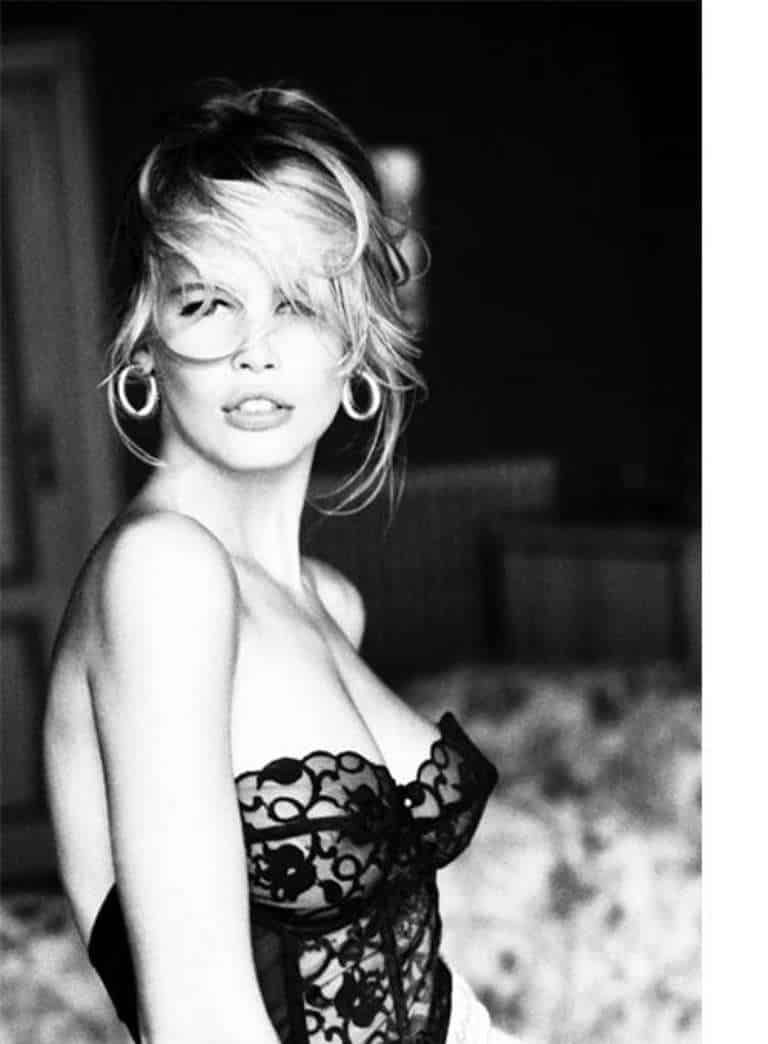
This photo of Claudia Schiffer appeared in von Unwerth’s 1989–91 campaign for Guess. Famously, the bustier Schiffer wore was not made by the jeans company.
About five years after she’d picked up a camera, in 1989, von Unwerth scored a black-and-white ad campaign for Guess with a then-unknown Claudia Schiffer. With her tousled blonde tresses and charming gap between her front teeth, Schiffer looked as alluring and uninhibited as Brigitte Bardot.
The wildly successful campaign launched both women into the stratosphere of their respective professions. Yet as famous as those pictures became, they never gave von Unwerth the kind of popular recognition that contemporaries like Herb Ritts and Annie Leibovitz achieved in the 1990s.
While images of alluring young women, often scantily clad, make up much of von Unwerth’s fashion and advertising work, they have slanted more toward the ludic than lewd. Yet she’s also been an intrepid adventurer in the land of erotica, shooting racy scenes for the lingerie company Agent Provocateur, as well as Playboy and GQ in a spread with Rihanna.
However, it’s been for the publisher Taschen that she has produced her most risqué work: several quite naughty picture books depicting tales of sadomasochism and fetishism. Von Unwerth is completely unabashed when speaking about these photographic romps.
For her, a healthy appreciation of nudity and sexuality is very German. “Oh, ja,” she said to the Guardian, “if you go to a park in Berlin in the summer, everybody is naked and playing Frisbee. You would get arrested if you did that in L.A.”
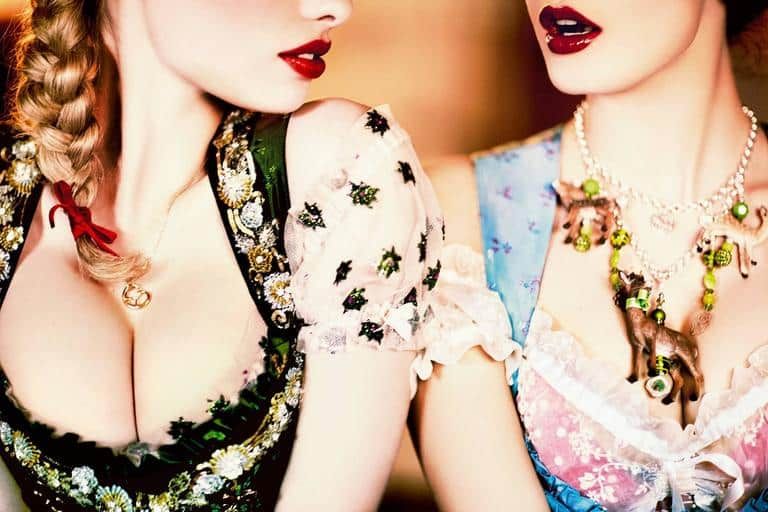
Necklace is included in von Unwerth’s book Heimat.
So it’s fitting that her latest investigation of the Germanic libido for Taschen is entitled Heimat. A German word that refers to a nostalgic longing for one’s formative homeland, Heimat was shot in the Bavarian Alps.
“We wanted to make a parody of the whole Bavarian thing,” she says. And so she has, as the book abounds in images of lissome lasses with bulging bodices and bare bottoms engaged in all manner of alpine activities. Delightfully decadent, the book and images are bound to become collector’s items — proof of the provocative originality of the female gaze.
